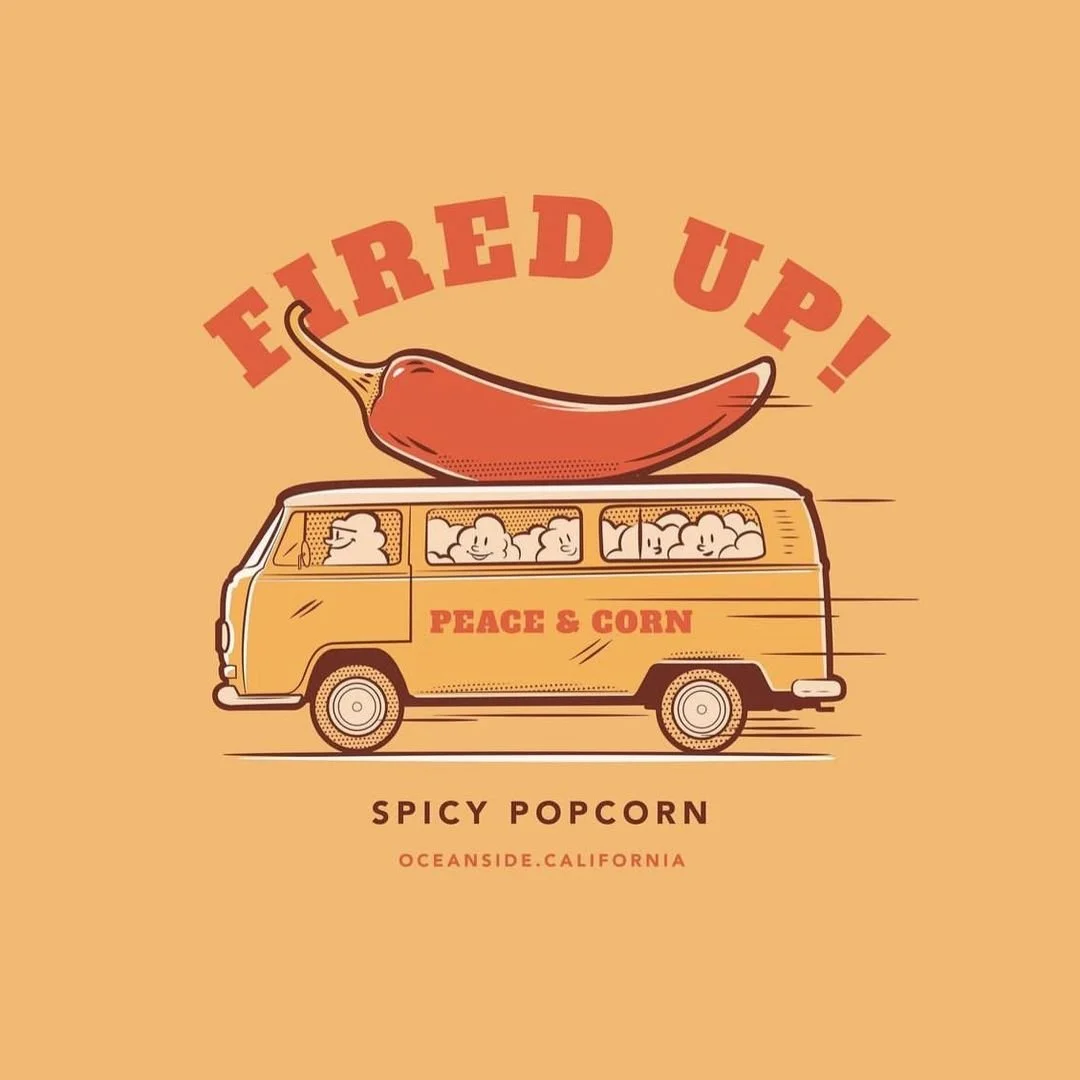
From Packaging to TikTok:
How Food Brands Stay Relevant in 2025
In today’s fast-moving consumer market, food brands must to go above and beyond offering a great-tasting product. The most effective brands transcend the product; they act as lifestyle brands, blending packaging design, fun social content, and real community connection to stand out.
Bold Packaging That Pops on Shelves (and Screens)
Consumers shop with their eyes first, both in the grocery aisles and on their social feeds. Visually distinctive packaging starts with shelf appeal and continues to be optimized for social media. Bright colors, fun fonts, and cool designs catch the eye in stores and make people stop scrolling and click ‘Add to Cart’.
Local, family-run, and proudly San Diego–based, Chipz Happen embodies this visual-first approach. Their neon-bright bags and playful flavor names like DaKine Chile Lime and Cheeze-ee Nacho pop off the shelf and screen alike. With “San Diego Style Tortilla Chip” stamped across the front, the brand captures a fun, coastal energy that connects with the community, demonstrating how strong design can build both recognition and belonging.
Purpose-Driven Branding
Today’s consumers connect with brands that stand for something. Whether it’s sustainability, health, or community support, purpose-driven storytelling builds loyalty and deeper engagement.
Fired Up! Popcorn blends bold, crave-worthy flavor with real health benefits and supports a good cause. Popped in antioxidant-rich turmeric avocado oil and seasoned to perfection, their organic, small-batch snacks are made with clean ingredients. As a family-owned, first responder-operated business, they donate 20% of every sale to support mental and emotional health in the community.
Influencers & Community-Driven Content
Influencer marketing continues to surge and in 2025, it's all about relevance, relatability, and resonance. Food brands are leaning on creators to share their stories authentically, often choosing micro and mega influencers who bring trust and niche credibility. The best partnerships feel natural and in sync with the brand’s vibe, as seen in the viral Poppi x Alix Earle collaboration. Poppi’s splashy Super Bowl launch put the brand on TV screens and social feeds at the same time, capturing the attention of new customers.
Limited Drops & Expansion Plans
Scarcity marketing and product evolution are two powerful ways to keep brands relevant and audiences engaged. Whether it's seasonal flavors, limited-edition packaging, or teasing future product categories, today’s food brands must be quick and proactive in offering something new. Many brands are using drop culture to mirror the buzz of fashion and streetwear launches. These moments create urgency and speculation while allowing for rapid testing of flavors or packaging styles. For any brand, this kind of expansion can spark renewed interest and build brand loyalty.
Tate’s Bakeshop has “dropped” seasonal limited edition cookies of years (before it became CPG brand requirement). With their iconic green packaging and signature crispy crunch cookies, they stand out among newer brands.
IRL Partnerships
In today’s crowded food space, strategic partnerships beyond the digital realm have become essential. They give brands new ways to extend their story, show personality, and build deeper community ties. By teaming up with sports teams, cultural events, or like-minded businesses, these affiliations ground a brand in real experiences that resonate with consumers.
Siete food’s Austin roots are reinforced through its Austin FC jersey, concession and community partnerships, creating touchpoints that are authentic, memorable, and rooted in lifestyle and brand values. Siete’s company motto is “Juntos el major” aka Together is Better.












